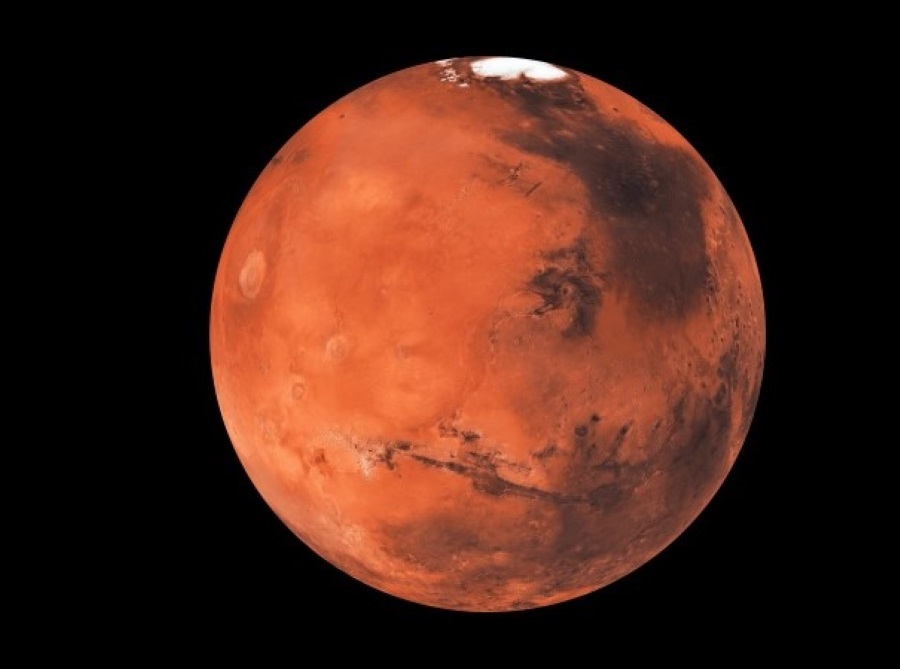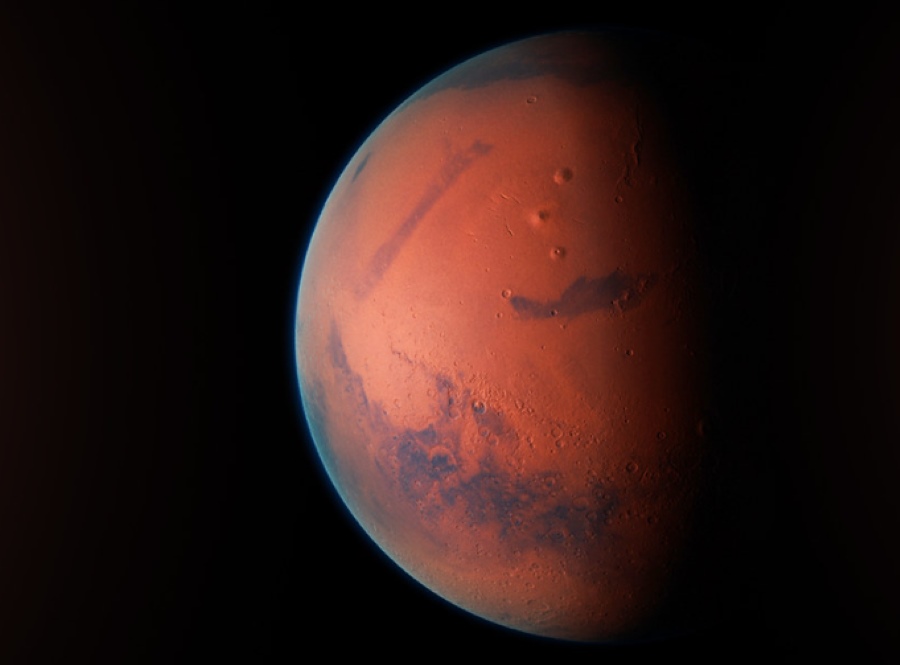7 Crore+ Customers

Affordable Premium

7 Crore+ Customers

Affordable Premium



We have only sent rovers to Mars, one of the most visited planets in our solar system, to investigate the alien terrain. Numerous findings from NASA missions indicate that Mars had a thicker atmosphere and was considerably wetter and warmer billions of years ago. It will take significant technological advancements to send humans to Mars in space.
Re-entry into the thin and shallow Martian atmosphere will be highly challenging because, in contrast to Earth's much denser atmosphere, any spacecraft entering the Martian atmosphere will descend very quickly to the surface and must be slowed down. Read along to learn about Mars exploration and the details.


Mars exploration involves the study and investigation of Mars, the fourth planet from the Sun, to understand its environment, geology, and potential for supporting life. This exploration is conducted through a combination of robotic missions, including orbiters, landers, and rovers, as well as plans for human missions.
Spacecraft have conducted remote explorations of Mars. Since the late 20th century, Earth-based probes have contributed significantly to our understanding of the Martian system, particularly its geology and potential for habitability. The engineering of interplanetary travel is challenging, and attempts to explore Mars have yielded mixed results, particularly in the early phases.
Approximately 60% of all spacecraft that were supposed to go to Mars failed before they could finish their missions, and several failed even before they could start taking observations. Specific missions have experienced unexpected success, including the twin Mars Exploration Rovers Spirit and Opportunity, which ran for years longer than planned.
Mars is the second nearest planet to Earth after Venus, located fourth from the sun. However, since they orbit the sun, Earth and Mars' distance from one another constantly changes. Theoretically, when Earth is at its farthest (aphelion) and Mars is at its closest point to the sun (perihelion), Earth and Mars will be the nearest to one another.
The distance between the planets would only be 33.9 million miles (54.6 million km), but there is no historical record of this. In 2003, the two planets came within the closest known approach, separated by just 34.8 million miles (56 million kilometres).
The location of Earth and Mars, and the technology available to get there, will all play a role in the response. NASA estimates that a trip to the Red Planet would take roughly nine months, round trip. It would take approximately 21 months to complete a round trip since you would need to wait three months on Mars to ensure that Earth and Mars are in a good position before continuing.
The layer of gases that envelops Mars is known as its atmosphere. Its main constituents are argon (2%), molecular nitrogen (2.85%), and carbon dioxide (95%). Water vapour, oxygen, carbon monoxide, hydrogen, and noble gases are also present in trace amounts.
Mars's atmosphere is significantly colder and thinner than Earth's, with a maximum density of 20g/m3 (about 2% of Earth's value) and a typical temperature of -60 degrees Celsius. The average surface pressure is less than 1% of Earth's value, or roughly 610 pascals (0.088 psi).
Liquid water cannot exist on Mars's surface due to the planet's weak atmosphere, although numerous studies indicate that the atmosphere was formerly much thicker. Since the planet's core began to slow down, gases have leaked out of Mars' atmosphere and lost mass to space.

NASA lists the MEP's (Mars Exploration Program) four main objectives related to comprehending the possibility of life on Mars.
Determining whether or not life has ever existed on Mars requires first determining whether or not the planet is suitable for life to comprehend Mars' potential for habitability. The fundamental tenet of the MEP, known as "Follow the Water," is the notion that, at least on Earth, water exists wherever there is life. Finding locations where water is, was, or might be present is a primary objective of the MEP.
Superoxide abundance virtually eliminates sunlight as a potential source of life's energy, making life on Mars' surface extremely implausible. As a result, it is necessary to look for alternate energy sources, including chemical and geothermal energy. Microscopic life forms under the surface of Mars may exploit these sources, which are also utilised by life forms on Earth.
The existence of carbonate minerals and the fact that carbon dioxide makes up most of Mars' atmosphere suggest that water may have been on the planet for a considerable amount of time, long enough to support the emergence of life.
Another objective of the MEP is to characterise Mars's environment in the past and present and the variables influencing climate change on the planet. It is understood that seasonal variations in Mars' ice caps, dust carried by the atmosphere, and water vapour exchanged between the planet's surface and atmosphere all influence the planet's temperature.
Gaining insight into these climatic events enables scientists to more accurately simulate the historical climate of Mars more accurately, leading to a deeper comprehension of the planet's dynamics.
Mars has a geology different from Earth's because of its enormous volcanoes and lack of crust movement, among other factors. Understanding these distinctions from Earth and how tectonics, wind, water, volcanoes, cratering, and other processes have created Mars' surface is one of the MEP's objectives.
By identifying minerals that are only formed in water, rocks can help scientists determine whether water was abundant on Mars in the past. They can also choose whether Mars once had a magnetic field, indicating that the planet was dynamic and similar to Earth.
A human expedition to Mars would be challenging to engineer. Before any steps are taken towards putting humans on Mars, scientists would need to fully comprehend as much of the planet's dynamics as possible because the planet's surface is home to superoxides and lacks an ozone layer and magnetosphere to guard against solar radiation.
By terrestrial standards, Mars is the most habitable place in the solar system after Earth. It might have formerly sustained life, according to several lines of evidence that have been gathered over decades. There will undoubtedly be many unique difficulties in transporting humans to Mars, ranging from technological and logistical issues to human aspects and the distances required. Here are a few challenges:
As part of NASA's Mars 2020 project, Perseverance, also known as Percy, is a car-sized Mars rover built to investigate the Jezero crater on the planet. The Jet Propulsion Laboratory produced it, and on July 30, 2020, at 11:50 UTC, it was launched. On February 18, 2021, at 20:55 UTC, confirmation that the rover had successfully touched down on Mars was received.
Perseverance has been in operation on Mars for 1209 sols, or 1,242 Earth days, three years, four months, and twenty-six days, as of July 14, 2024. NASA dubbed the landing location Octavia E. Butler Landing after the rover arrived. Four primary science goals of the Perseverance rover complement the science goals of the Mars Exploration Programme:
| Searching for Habitability | To locate historical habitats that could have supported microbiological life. In those livable conditions, look for indications of potential former microbial life. |
| Looking for Biosignatures | Particularly in certain types of rock that are known to retain evidence throughout time, the rover will look for biosignatures. |
| Sample Caching | Sample caching involves gathering core rock and regolith (loose, unconsolidated "soil") samples, which are then stored inside the rover and later transferred to a sample return rocket. |
| Prepare for Humans | Testing the Martian atmosphere's capacity to produce oxygen as a human precaution. |
During the initial scientific campaign, Perseverance drives southward in an arching manner from its landing location to the Séítah unit. This allows it to "toe dip" into the unit and gather remote sensing data on geology targets. Following that, it will go back to the Crater Floor Fractured Rough in order to retrieve the initial core sample. The first science campaign ends with passing over the landing place of Octavia E. Butler.
Only Mars has dispatched rovers to examine its hostile environment, making it one of its most explored planets. Numerous findings from NASA missions indicate that Mars had a thicker atmosphere and was considerably wetter and warmer billions of years ago.
For thousands of years, astronomers, stargazers, and anybody with a passing curiosity about worlds other than our own have been fascinated by Mars, also known as the Red Planet. In the meantime, we're continuously discovering new things about the rocky planet because of the almost constant advancement of technology.